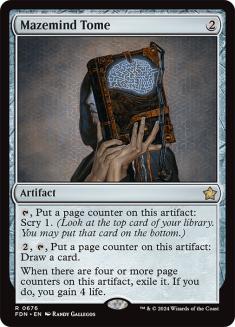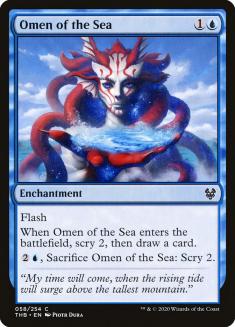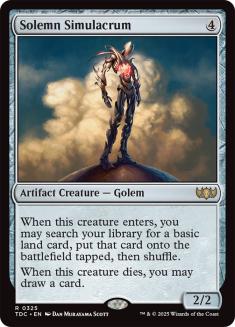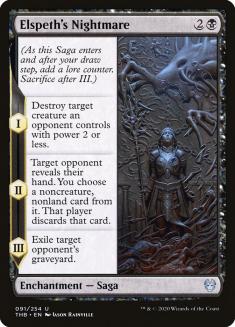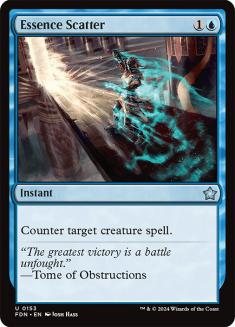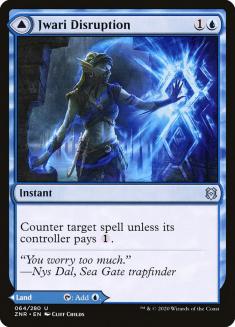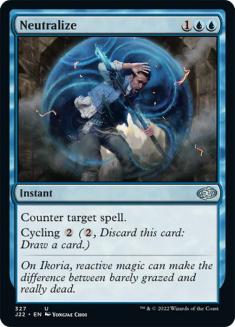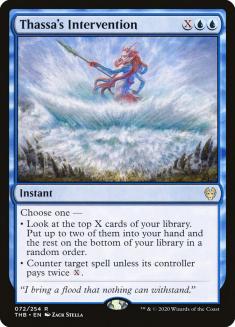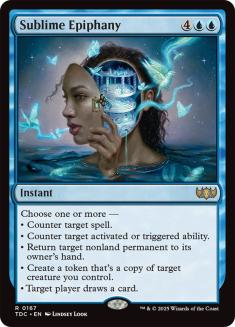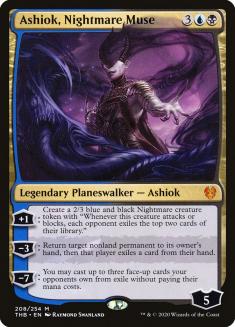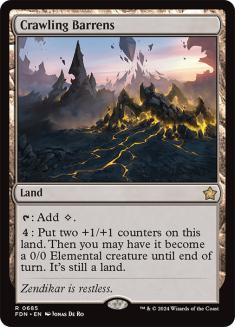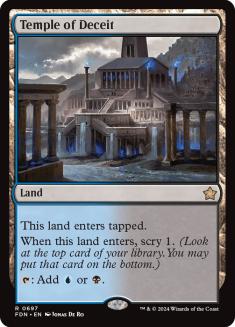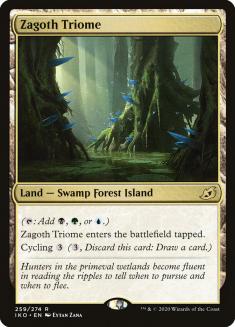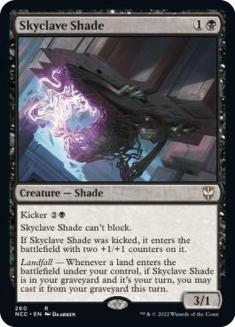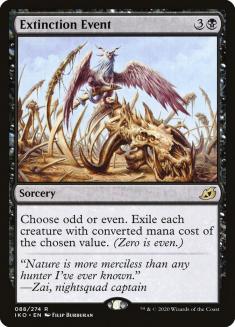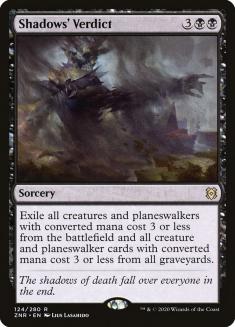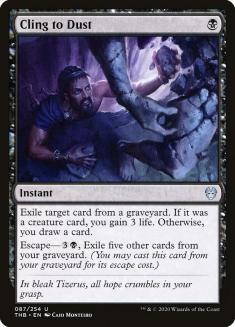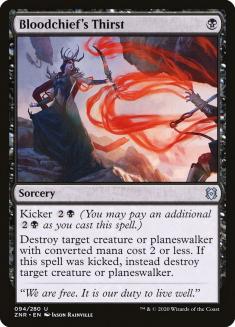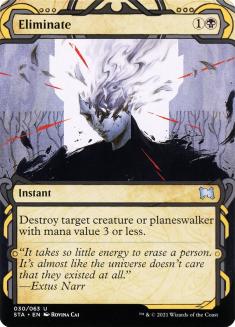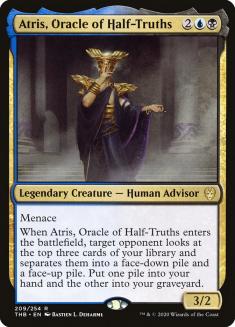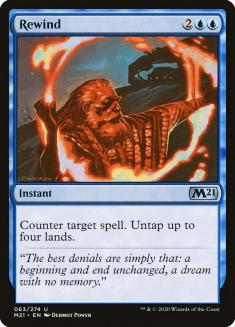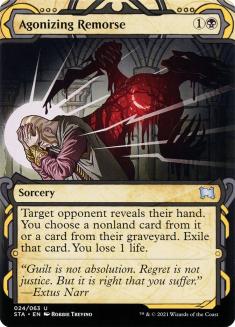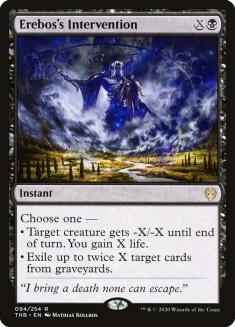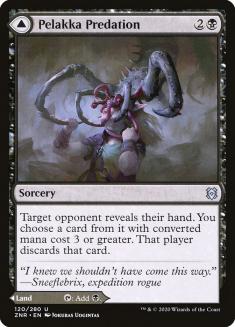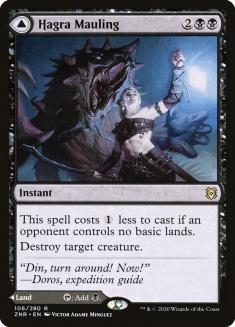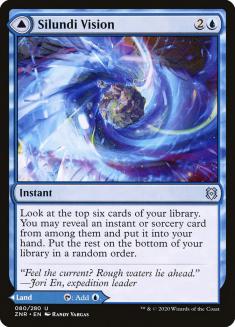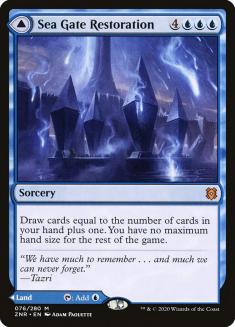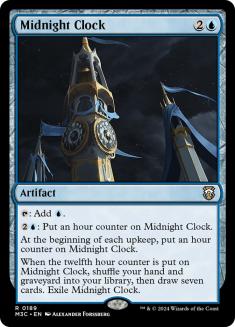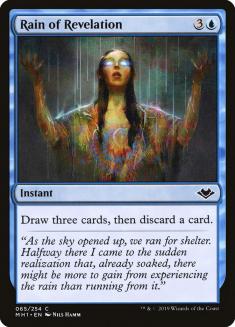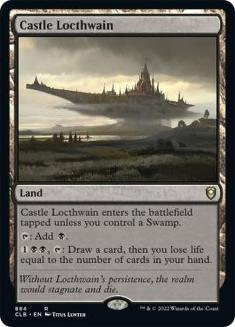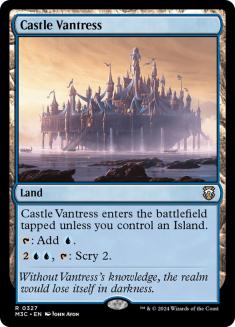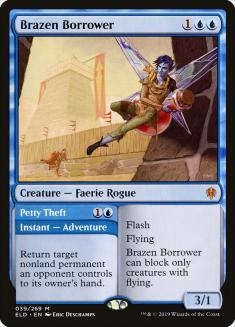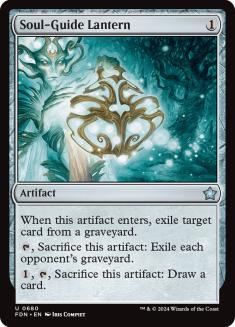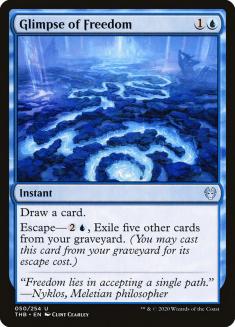There have been a lot of Dimir Control decks over the last year…
…and I haven’t really loved any of them. It’s not that they are “bad” per se, but it always seemed to me that they tended to really rely on lining up the right answers to the right problems at the right times. They never really had that strong of an engine fueling them with raw power.
That’s all changed.
Yes, I know what you’re thinking; “Finally, a Yorion deck!” But seriously, this is a pretty strong card.
Mazemind Tome is a potentially legitimate game-winning advantage, against some decks anyway, if enough stuff lines up right; however, when combined with Yorion, now we’re really starting to get somewhere.
Dimir Control doesn’t have the most cards to blink, but there’s definitely enough that you’re still getting your money’s worth. Elspeth’s Nightmare, in particular, is a really cool blend of early interaction, disruption, and card advantage to blink.
Continuing to gain popularity, Dimir Control has been really overperforming lately, including several first-place finishes on Magic Online (MTGO).
Creatures (4)
Planeswalkers (6)
Lands (31)
Spells (39)

When was the last time you saw this much permission in a Standard deck?
Yeah, obviously this is an 80-card deck, but even if it were eleven permission spells instead of fourteen, it’s not like that’d be a small amount either. Standard has had so many proactive threats that snowball advantages from various angles, it’s generally hard to play that much dedicated permission these days, and that’s to say nothing of having access to five more out of the sideboard.
However, in this list, a key component is nine of the fourteen permission spells effectively “cycling” one way or the other, mitigating the risk of getting glutted with permission while something that ducked under is building an advantage on the battlefield.
While Yorion can be a victory condition, especially with this much permission, it’s more about the card advantage, like Solemn Simulacrum. The real win conditions are the planeswalkers.
Ugin, the Spirit Dragon is obviously a classic, the gold standard for finishers right now. Ashiok, Nightmare Muse provides an extra avenue of attack that isn’t breaking any power-level records, but it’s fast enough to have value against aggressive decks while building enough advantage each turn to pull its weight against midrange and ramp decks. The minus ability can also be particularly valuable for answering unusual threats when combined with permission.
Yorion and Solemn Simulacrum damage matter a lot more when you consider the playset of Crawling Barrens. Between it, Temple of Deceit, Zagoth Triome, and Jwari Disruption, an awful lot of the lands in this deck have some spell-like functionality.
Between Omen of the Sea, Mazemind Tome, Neutralize, Thassa’s Intervention, and more, this list is extremely well-equipped to smooth its draws, which, when combined with the excellent mana efficiency of its spells and Yorion as a source of raw power to build towards an Ugin endgame, are the primary draws to the strategy.
Planeswalkers, creature-lands, Simulacrums, and Yorion aren’t even the whole picture of victory conditions, either.
While Shark Typhoon is a fine maindeck card, it does gain a little here from opponents sideboarding out removal, as well as its applications against planeswalkers and Negate / Mystical Dispute.
Skyclave Shade is obviously not realistic Game 1, on account of not playing defense. However, once you know you’re playing a control deck or a grindy midrange deck, it’s a very efficient threat that hits from yet another angle compared to the rest of the deck.
One of the biggest sources of advantage in this list is how fantastic of an Extinction Event deck it is. Extinction Event is in the running for best removal spell in Zendikar Rising Standard. While not a hard sweeper like Shatter the Sky, it does exile, as well as sometimes dodging your Simulacrum and Nightmare tokens. Besides, it doesn’t let them draw a card, nor does it require white mana.
While less efficient than Extinction Event, Shadows’ Verdict is a nice touch as a supplemental feature to an Extinction Event deck. One of the primary ways to play around Extinction Event is to deploy half two-drops and half three-drops. While this mitigates their exposure to Extinction, Shadows’ Verdict easily cleans it all up, plus going after their graveyard, giving us an extra answer to escape.
Similarly, Cling to Dust is a versatile, albeit inefficient, tool that gives us more graveyard hate, more lifegain, and another card draw engine if things stall out.
Rounding out the removal, we’ve got a bunch of the usual suspects. While Bloodchief’s Thirst, Eliminate, and Heartless Act are all good cards, the important element here is just how cheap they are. With sixteen ways to interact on Turn 2, this list is 85% to have interaction on Turn 2, on the play, despite being 80 cards.
While the lists have converged a fair bit, there is still a bit of variation. MTGO player djbmppwns put up a Top 16 list featured maindeck Shark Typhoons instead of most of the Ugins (still keeping one though, as an added angle of attack).
Creatures (2)
Planeswalkers (3)
Lands (32)
Spells (43)

This build also features Atris, Oracle of Half-Truths in lieu of Solemn Simulacrum.
When you’re trying to ramp to Ugin, Simulacrum gets more important, but in this list, there’s less need for the extra mana. That said, this one looks light on Yorion targets, in my estimation. It doesn’t even have the full playset of Mazemind Tomes main.
This list also features a couple of Rewinds for added countermagic, and while I don’t mind Rewind, I’m not sure I love the opponent’s end-step plays enough to make me want to Rewind over any of the other options.
Agonizing Remorse is fine, I guess, but it’s kind of mana-inefficient when the exile part it’s adding isn’t even novel, thanks to the generally superior Cling to Dust and Shadows’ Verdict.
As if that wasn’t enough graveyard hate, Erebos’s Intervention also gets the nod, here. I don’t mind the card in plenty of contexts; but I’m not sure we’re getting enough out of it here (even if the real reason it’s been included is the –X/-X and gain X mode).
Batutinha went even further in the anti-Ugin evolution, with an identical list, save an extra Ashiok instead of Ugin. While I don’t agree with it in the current meta, it is sort of an interesting high-level statement about the format.
Creatures (2)
Planeswalkers (3)
Lands (32)
Spells (43)

Perhaps last week’s most exotic take on Dimir Control comes to us courtesy of MTGO legend Phil_Ivey (no relation), built around a substantially greater number of DFCs, giving us a shockingly low 20 lands out of 80 cards.
The one that really gets me, though, is the Midnight Clock package.
Sure, it’s an extra mana source, and it does work especially well on Turn 4 with a two-mana counter, but it’s just wild to me that we’d want to build around this instead of Ugin. That said, it’s a good time against Dimir Rogues. Here’s the list in question:
Creatures (3)
Planeswalkers (3)
Lands (20)
Spells (54)
- 2 Negate
- 2 Essence Scatter
- 1 Rain of Revelation
- 2 Midnight Clock
- 4 Omen of the Sea
- 2 Cling to Dust
- 1 Erebos's Intervention
- 2 Elspeth's Nightmare
- 3 Neutralize
- 3 Shark Typhoon
- 3 Extinction Event
- 3 Heartless Act
- 2 Eliminate
- 3 Mazemind Tome
- 4 Bloodchief's Thirst
- 3 Pelakka Predation
- 4 Sea Gate Restoration
- 4 Jwari Disruption
- 1 Silundi Vision
- 4 Hagra Mauling
- 1 Shadows' Verdict
Sideboard

It’s not that Murderous Rider is bad or anything. It’s just not really that mana-efficient for the current format, while also not working with Yorion. It’s probably fine, though I’d want more ways to make sure Yorion is excellent.
Cool! Rain of Revelation might be underrated. My only issue here, which is kind of always the issue with Rain of Revelation: is it really better here than a fourth Shark Typhoon (or one of numerous other four-plus-cost card advantage options)?
Brian_Kibler_Is_God’s Top 32 finish comes with both Atris and Solemn Simulacrum, while still featuring just as many Ashioks and Ugins as some, not to mention a Shark Typhoon maindeck.
Creatures (7)
Planeswalkers (6)
Lands (31)
Spells (36)

Where’d it get the extra room?
Sadly, cutting the spice: Thassa’s Intervention, Shadows’ Verdict, Sublime Epiphany, along with both copies of Cling to Dust, which also opens up space for an extra Elspeth’s Nightmare, as well as one of the Shark Typhoons maindeck.
Two last lists I’d like to take a look at are sort of the metric by which we’re comparing the Dimir Control decks, Dimir Control (sans Yorion).
Creatures (2)
Planeswalkers (3)
Lands (24)
Spells (31)

A little light at just 60 cards, this list cuts a lot of the fancy stuff, adds Castles and Brazen Borrowers, and calls it a day.
While Brazen Borrower is always at least “fine,” it is a little valuable than it would otherwise normally be, on account of Ashiok’s ability to help out with bounce. The Castles, however, I am into. Why doesn’t the other list use at least one or two, anyway?
Draivanhoe’s Top 32 list was also Yorion-less, with a little more DFC action:
Creatures (2)
Planeswalkers (3)
Lands (20)
Spells (35)

While I just wouldn’t want to give up Yorion, there are a few interesting sideboard cards here. Despite lots of other graveyard hate cards, Soul-Guide Lantern also makes an appearance.
Okay, at least this one makes sense as a card. We’re super-unsure on graveyard interaction, but whatever. It’s a fine card.
What an unusual sideboard card?! Glimpse of Freedom seems like a worse, less flexible Cling to Dust (and it’s not like they stack well). I’m pretty suspicious of this one, but I could see it being right (especially if you don’t have Yorion to bail you out).
As you can see, Dimir Control is back and in a big way. For my mana, I’m packing Yorion, Sky Nomad, no question. I don’t think the format has gotten so skewed that control is the only option by any means, but if you’re into this sort of a deck, this new(-ish) style of Dimir Control is highly recommended.



